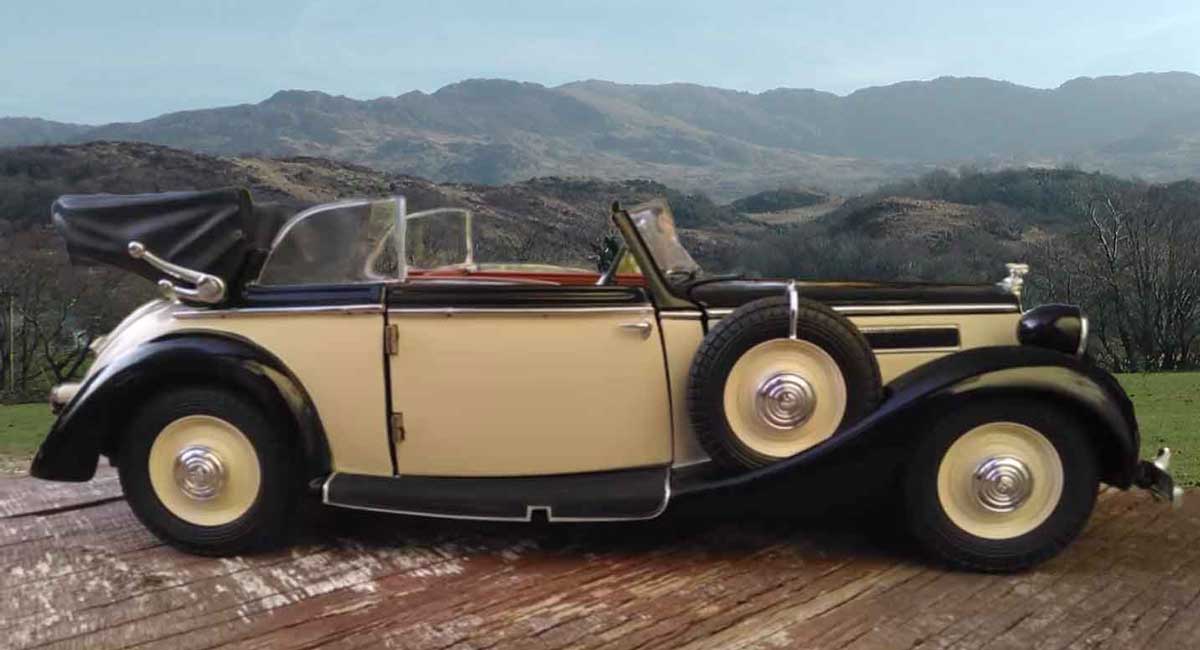Horch Phaeton

August Horch was a blacksmith who studied engineering. In 1901 at the age of 33 he built his first car then in 1904 he formed Horch & Cie. Motorwagenwerke AG (Horch and Co Motor Car Works). So far so good; but from now on it becomes a little complicated!
He fell out with the company's chief financial officer and left. He set up another company called August Horch Automobilwerke GmbH but ran straight into legal problems. It turned out that the original company was the only one entitled to be called 'Horch'; so like WO Bentley he had lost the right to use his own name on his cars.
So now he had to pick a new name. The literal translation of 'Horch' in old German is 'listen!'; And he just so happened to have a business friend who was learning Latin. This guy pointed out that the Latin term for 'Listen' or 'Horch' is Audi; and a new brand was born. In 1932 his new company merged with DKW, Wanderer and Horch to form the Auto Union Group; Audi became the chief brand name and because there were four companies merging together they adopted four circles as their trademark; one which still exists to this day.
So much for the history. The Horch brand name was kept for the luxury end of the market and in 1936 the division produced what was probably the finest car that the group had ever created; the 853 Phaeton.
This was a massive car weighing over 2 1/2 UK tonnes. It had a 5 litre straight eight cylinder engine producing 120 brake horsepower and giving it a maximum speed of just over 90 mph. It was handsome, upright, imposing, and it exuded power. A top Chicago gangster would have felt completely at home in it and it became a favourite of top German army and SS officers.
They were probably, at the time, amongst the only ones who could afford it in Germany anyway. The ordinary Germans were better off than they been for a long time but the country was gearing up for World War II and manufacturing priorities leaned more towards armaments than production of luxury cars. However the Phaeton was cheaper than its nearest rivals, including Mercedes, and sales were relatively healthy.
This car was built like a tank which was just as well because it was not long before The Auto Union Group was building real tanks for the German army and production of cars ended apart from a number that were made for use by military personnel.
After the war was over the old production facilities for the Phaeton, which were in Zwickau, suddenly became part of Soviet controlled East Germany; they had no need for a car that nobody in the country would be able to afford anyway so the factory was dismantled.
By 1964 however prosperity had come back to Germany and the Auto Union was bought by Volkswagen. The old Audi trade name was resurrected; and the rest is history.